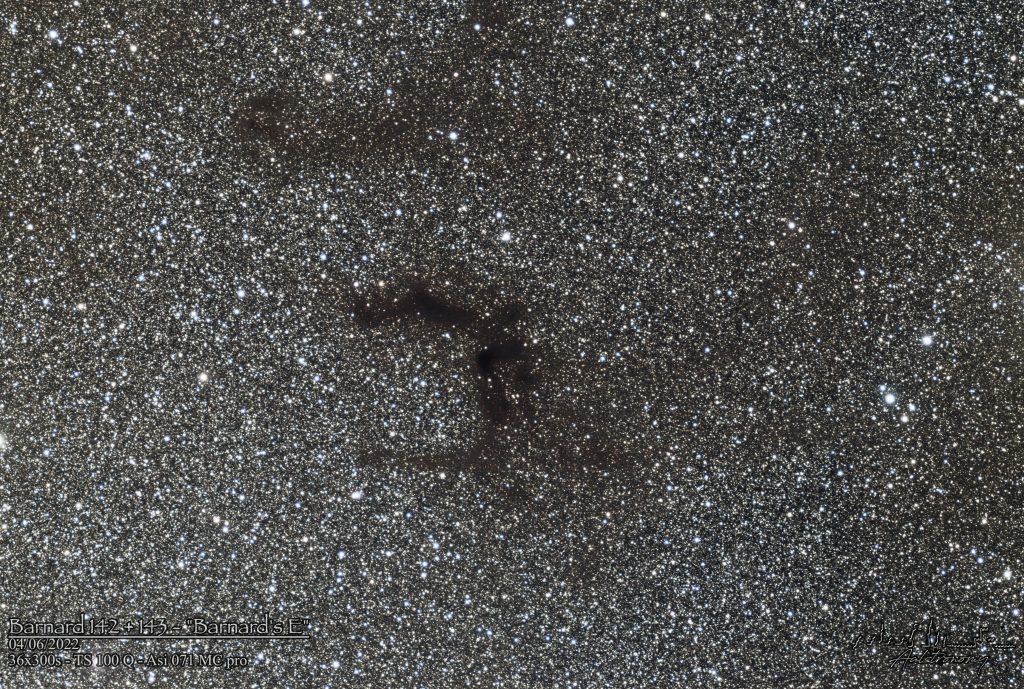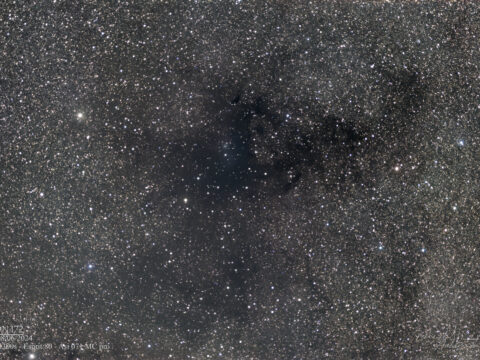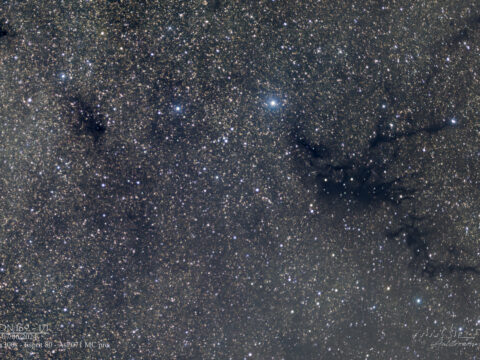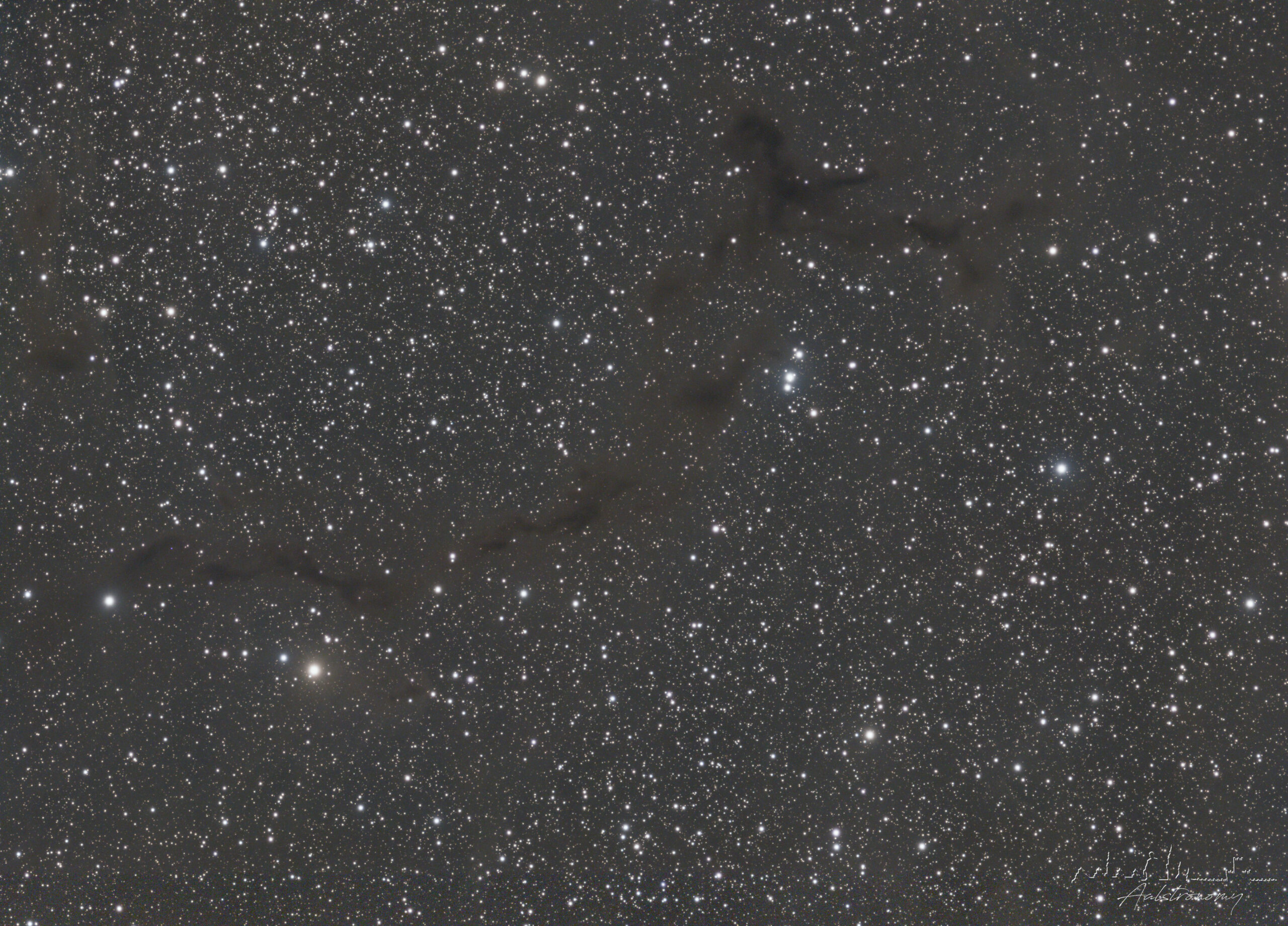In the tapestry of the night sky, Barnard’s E stands as a captivating enigma. This dark nebula, shrouded in obscurity, defies the luminous backdrop of stars and galaxies, capturing our imagination and revealing the hidden mysteries of the cosmos.
Cosmic Shadows: Dark nebulae like Barnard’s E are vast clouds of dense interstellar dust and gas that absorb the light of background stars, creating striking silhouettes against the luminous background. These cosmic shadows offer a glimpse into regions of space where new stars might form, hidden from our view.
Invisible Sculptor: While these dark nebulae might seem invisible to the unaided eye, they’re revealed through various wavelengths of light, such as infrared and radio waves. Barnard’s E beckons astronomers to delve into its depths, uncovering the secrets it holds.
Birth of Stars: Barnard’s E, located in the constellation Perseus, offers a canvas for stellar birth. Within its cool and dense recesses, gravitational forces encourage the collapse of gas and dust, setting the stage for the creation of new stars and planetary systems.
Cosmic Complexity: The existence of dark nebulae like Barnard’s E reminds us of the universe’s intricate dance of light and shadow. As we peer into these cosmic shadows, we’re reminded of the vastness and diversity of the cosmos that extends beyond what meets the eye.
In the end, Barnard’s E serves as a poetic reminder that the cosmos is not solely composed of luminous stars and galaxies, but also holds hidden stories of cosmic creation and evolution, veiled within the depths of enigmatic darkness.
Image made at the Rooisand desert farm in Namibia. Only 36x300s was needed for this result. This is what ZERO lightpollution does!










